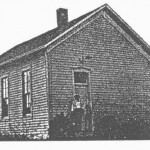Now known as the Indianapolis International Airport, the facility once went by a different name. From 1944 to 1976, it was known as Weir Cook Municipal Airport, in honor of a WW1 flying legend. When a new passenger terminal was completed in 2008, the Veterans Coalition of Indiana demanded that the fighter pilot’s name be restored.
The namesake of the Colonel H. Weir Cook Terminal was a Wilkinson native and DePauw University graduate. After the First World War started, Cook enlisted in the aviation section of the Army Signal Corps and was assigned to the esteemed “Hat in the Ring” 94th Aero Squadron, led by American fighter ace Captain Eddie Rickenbacker.
As a fighter pilot, Cook became known for single-handedly attacking groups of enemy fighters and successfully driving them off, which twice earned him the Distinguished Service Cross. He finished the war with seven victories and a promotion to captain.
Beyond his own flying career, Cook’s contributions to aviation history include building the Indianapolis airport in 1931, and developing the dive bomber concept for the U.S. Army. Additionally, Cook secured recognition for the Wright Brothers as the pilots of the first powered aircraft flight.
In March of 1943, Lieutenant Colonel Harvey Weir Cook misjudged his altitude during a routine flight in cloudy weather and crashed into the side of a mountain. He was buried at the National Memorial Cemetery of the Pacific in Honolulu, Hawaii.





















